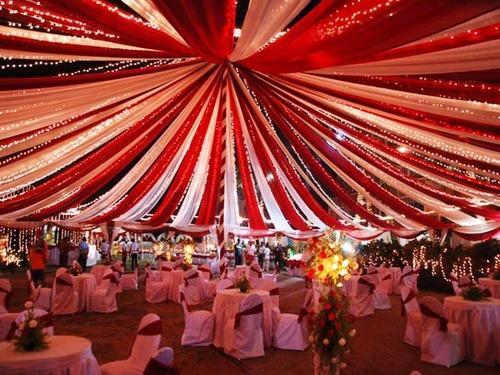
By Showkat Ali
In recent years, the wedding industry has seen an overwhelming trend: extravagant photoshoots in public spaces. From opulent parks to bustling streets, couples seem to prioritize the spectacle of their nuptials over the sanctity of the occasion itself. As onlookers, we must ask: are these elaborate displays a genuine quest for memories, or merely a public exhibition of wealth and status?
Weddings have always been significant milestones in people’s lives, serving as a celebration of love and union. Traditionally, these events focused on family, friends, and intimate gatherings. However, the advent of social media has transformed the wedding landscape into a stage for public performance. Couples now feel pressured to capture their love story through lavish photoshoots, often at the expense of authenticity and simplicity.
The juxtaposition of wedding celebrations in serene, natural settings against a backdrop of luxury raises important questions about the values we hold dear. Are we documenting our love, or are we showcasing our financial prowess? This phenomenon is not just confined to weddings; it reflects broader societal trends where material wealth is often equated with personal worth.
Consider the myriad of wedding photoshoots taking place in urban parks, historical landmarks, and even crowded marketplaces. While these locations may offer stunning visuals, they also invite scrutiny. Are the couples seeking to immortalize their love, or are they hoping to garner admiration and envy from onlookers? The lines between personal celebration and public spectacle have blurred significantly.
The silence from influential voices—religious leaders, prominent journalists, and social activists—on this topic is disheartening. Our molvis, typically vocal on matters of morality, seem to be absent from the discussion surrounding the commercialization of sacred traditions. They have the platform to remind us of the true essence of love and commitment, yet their silence allows this trend to flourish unchecked.
Similarly, elite journalists, who often critique societal behaviors, appear to overlook the implications of these ostentatious displays. Instead of exploring the deeper meaning behind such trends, many seem more focused on the glamour, contributing to a culture that glorifies extravagance over intimacy. The consequence of this oversight is a generation that may equate love with lavish spending rather than meaningful connections.
Activists advocating for social change also seem hesitant to engage with the implications of this trend. They might rally against economic disparities, yet fail to address how such public displays reinforce societal hierarchies. The cost of these photoshoots can often amount to a small fortune—resources that could be better allocated towards community welfare or environmental sustainability. Why, then, do we choose to invest in opulence rather than in purpose?
As we navigate this complex landscape, we must reflect on the messages we are sending to future generations. Children and young adults are absorbing these images of grandeur and associating them with love and commitment. What happens when they reach the age of marriage? Will they feel compelled to outdo their predecessors, spiraling into an endless cycle of excess? Or will they recognize the value of shared experiences and emotional connections over material displays?
Moreover, this trend raises questions about inclusivity. Not everyone can afford the extravagant photoshoots that have become commonplace. Those who cannot may feel marginalized, left to celebrate their unions in less visible or less glamorous ways. Love should not be a privilege marked by economic disparity; it should be an experience shared by all, regardless of financial means.
Ultimately, we need a cultural shift that embraces simplicity and authenticity over extravagance. Weddings should be celebrations of love that reflect personal values, not competitions of wealth. Couples should feel empowered to create meaningful memories without the burden of societal expectations.
To foster this change, we must engage in open dialogue. It is time for our community leaders—be they religious figures, journalists, or activists—to address the implications of this trend. They should guide us in reclaiming the true essence of weddings, emphasizing that love is not defined by what one spends but by the connections we forge.
In conclusion, while photoshoots are an inevitable part of modern weddings, we must remain vigilant about their underlying motivations. Let us champion authenticity over showmanship, ensuring that future generations understand the true value of love and commitment. It is time to shift our focus from public displays of wealth to genuine expressions of affection, reminding ourselves and our communities that the heart of a wedding lies in the love shared, not in the spectacle created.
- The author can be reached at showkatali.sa@gmail.com
Follow this link to join our WhatsApp group: Join Now
Be Part of Quality Journalism |
Quality journalism takes a lot of time, money and hard work to produce and despite all the hardships we still do it. Our reporters and editors are working overtime in Kashmir and beyond to cover what you care about, break big stories, and expose injustices that can change lives. Today more people are reading Kashmir Observer than ever, but only a handful are paying while advertising revenues are falling fast. |
| ACT NOW |
| MONTHLY | Rs 100 | |
| YEARLY | Rs 1000 | |
| LIFETIME | Rs 10000 | |











